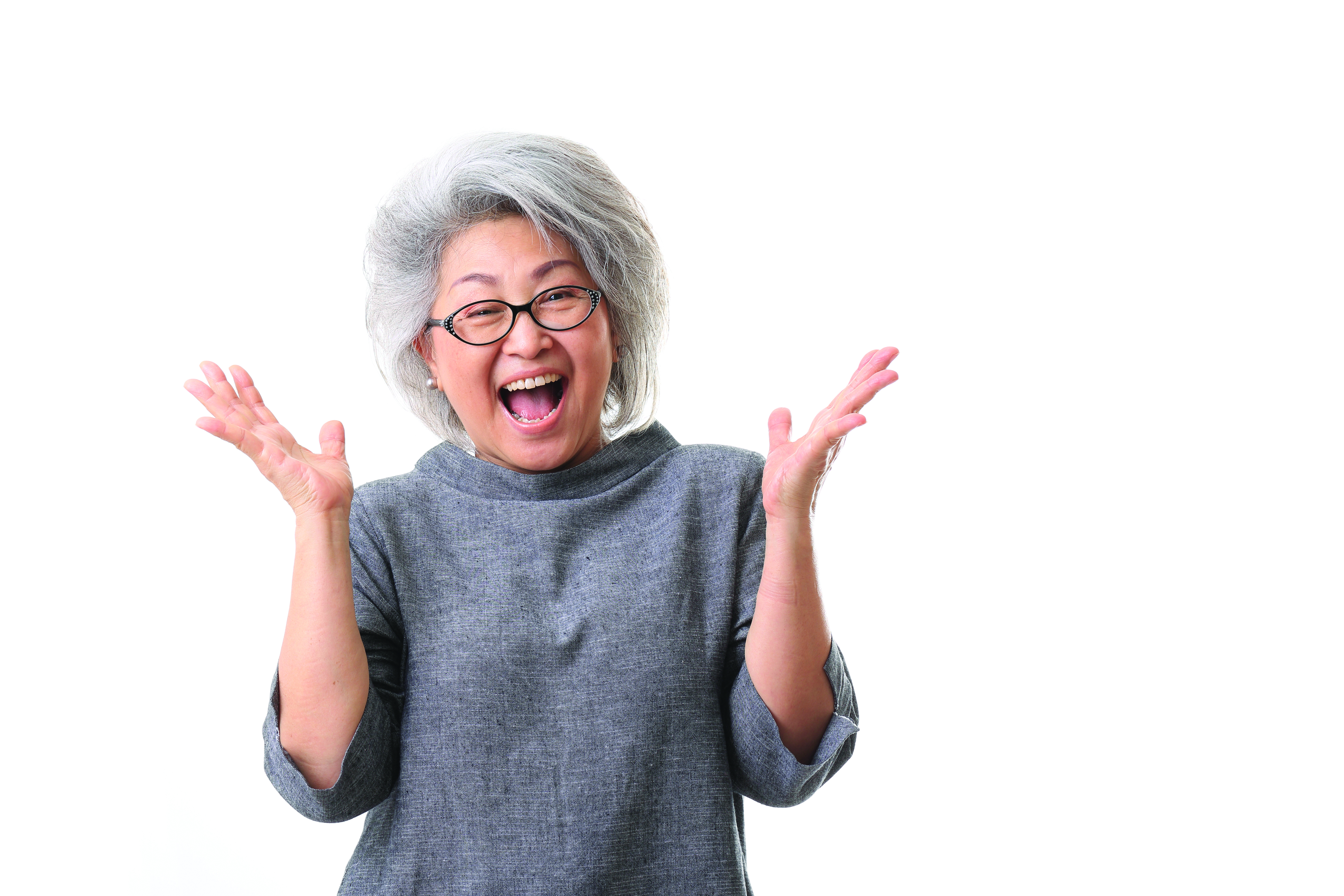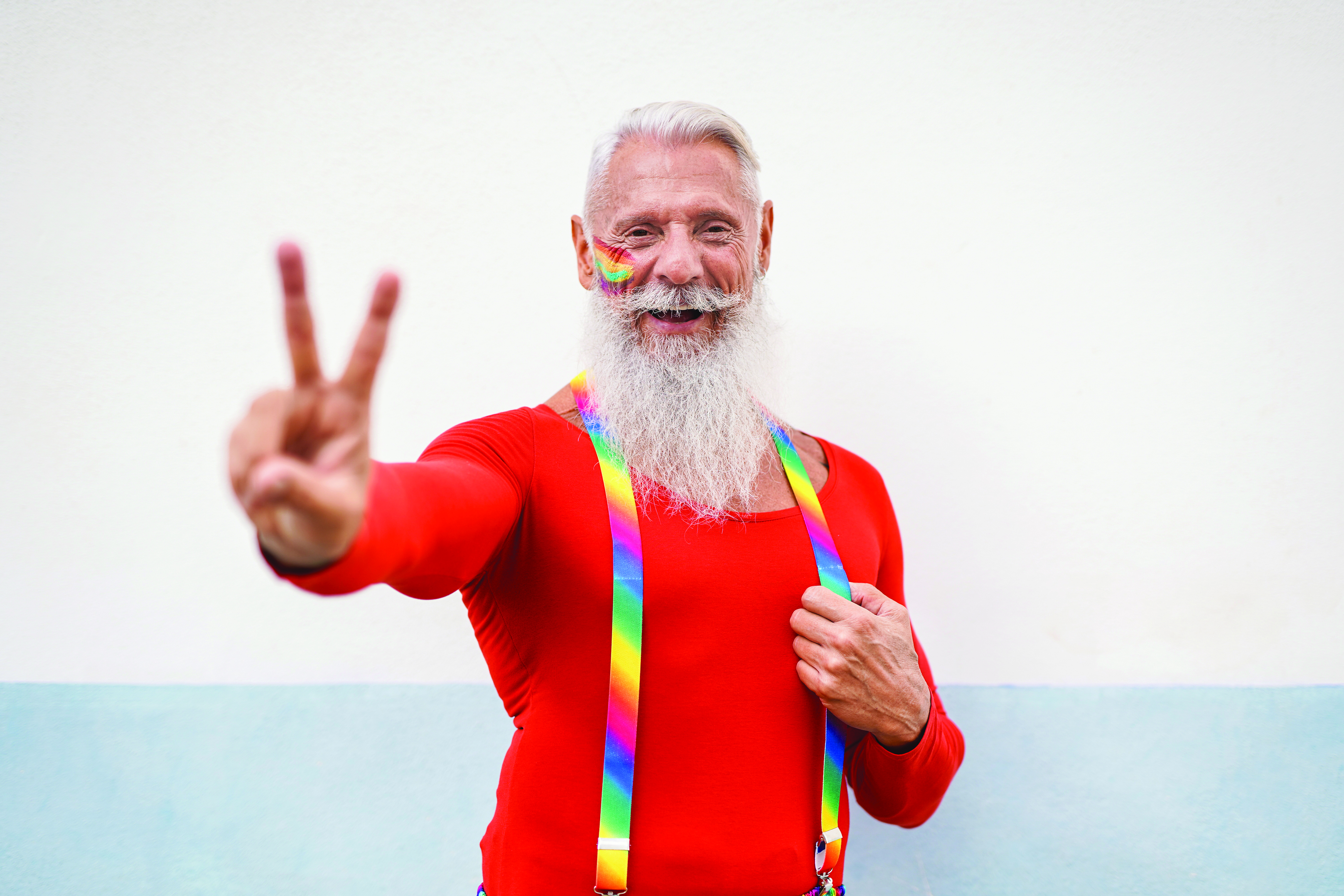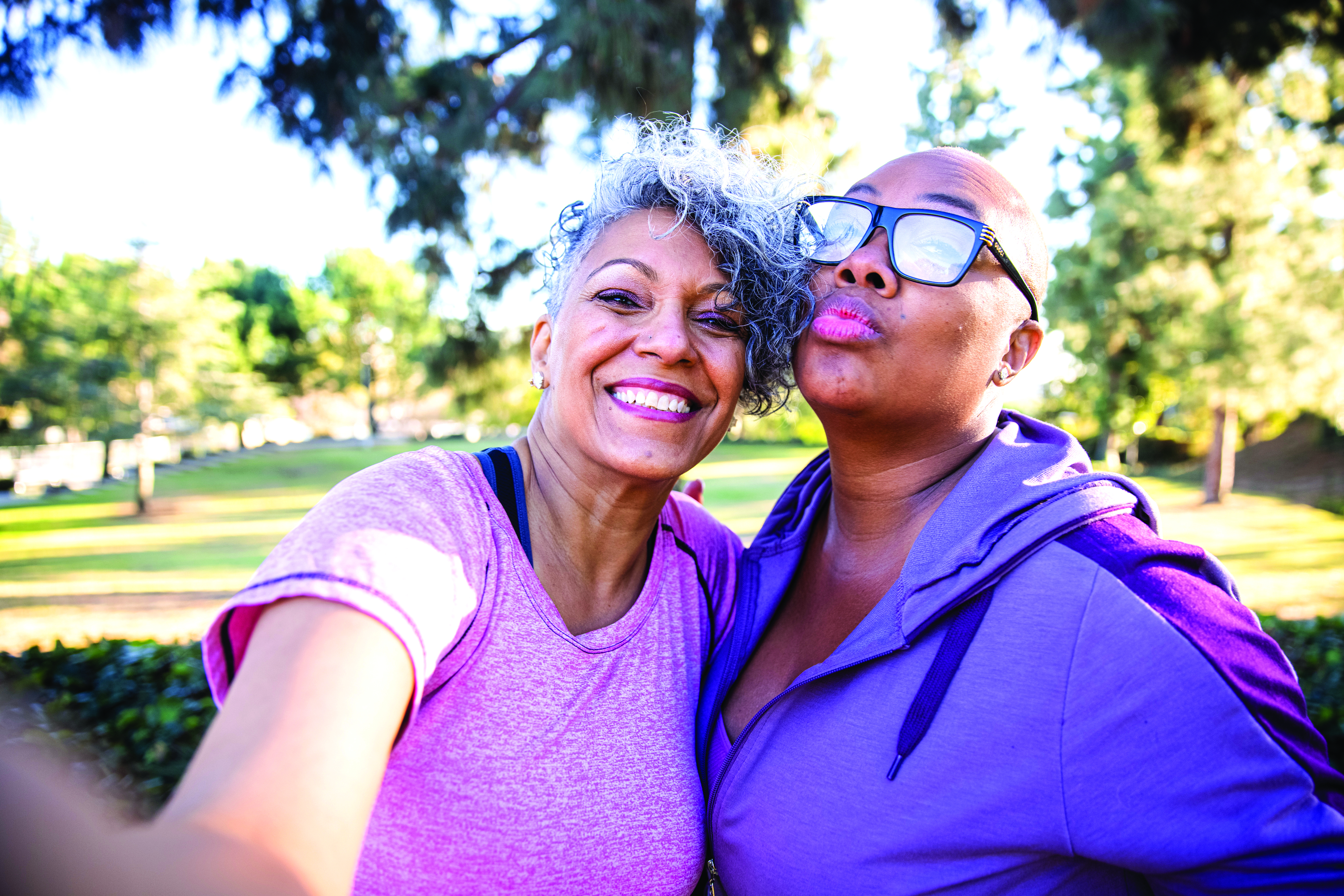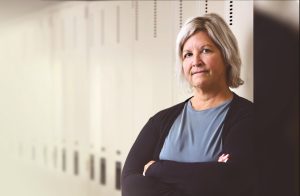While some LGBTQ seniors may continue to experience discrimination because of their sexual orientation or gender identity, they may also experience other types of discrimination, such as ageism, sexism, racism or HIV/AIDS status. These factors contribute to the risk of social isolation and invisibility in LGBTQ seniors, especially within the health and social services network, and have a direct impact on their health.
By looking at case studies, we can understand the diversity that exists in LGBTQ seniors’ experience of isolation—from very little or no isolation to long-lasting, more severe isolation. The first example, shown below, illustrates how a life marked by discrimination on multiple grounds can be associated with isolation in an LGBTQ senior.

Meet Lisa. Lisa Fang is a 77-year-old woman of Chinese origin who immigrated to Canada back in 1960. At that time, she was still in her “man’s body,” as she called it. Having fled the terrible violence of the Communist regime in her country, she felt freer to express her truth in Canada. But even in this country at that time, behaviour recognized as homosexual—such as a man dressing as a woman in public—was a criminal offence. As a result, Lisa was actually put in jail a number of times.
Although Canada decriminalized homosexuality in 1969, Lisa suffered stigmatization and social discrimination for a number of years. It was not until the late 1990s that she chose to undergo a complete medical transformation of her body and change her given name from Lee to Lisa. Although society has evolved she still feels discomfort when dealing with medical professionals and avoids going to the doctor.
Lisa lives in Montreal and does not have a strong social network there. Her family still has difficulty understanding her, and never accepted her choices or identity. As a result, she does not have much contact with them. She has never really felt a part of the Chinese community either because of her “eccentric” side, which has not been very well accepted, and she has never felt a part of the Quebec community either. She regularly heard racist comments at work, so did not develop many connections with her coworkers over the years.
Lisa is worried because her health is fragile and doubts she will be able to stay alone in her home for very long. She is afraid of moving into a care facility because of the risk of experiencing discrimination from the staff and other residents. Lisa is wondering whether there are any places to live (or home care agencies) that provide specialized support to trans clients.
As this scenario illustrates, the ways in which social isolation manifests itself in LGBTQ seniors can be complex and may reflect a combination of risk factors and multiple types of discrimination. As a result, she is anxious, excluded and influenced by factors beyond reality.
While discrimination in the context of interpersonal relationships appears to be an important area, another key issue is that many seniors have lived through times that were far less progressive, and they may bear the psychological scars.
Of note: organizations looking to reach out to isolated LGBTQ seniors should begin by making sure they are not (consciously or unconsciously) promoting a heterosexist culture or promoting ideas that make assumptions about gender identity or sexual orientation. To show their openness, organizations and businesses can display the LGBTQ community’s rainbow flag and the trans flag on their websites.
A look at risk factors
Individual and environmental levels may contribute to the isolation of LGBTQ seniors. These factors are singled out in bold in the following case study.

Meet George. George is an 80-year-old gay man. He was once married to a woman, but their relationship was always somewhat distant and they never had children. George had clandestine extra-marital relationships with men for several years, which led to the couple’s divorce. After the divorce he met Patrick, with whom he developed a long-standing relationship that he never openly disclosed. Patrick lived with HIV for 20 years and died about five years ago.
George has been feeling very alone and isolated since Patrick’s death. He realizes that he relied a lot on Patrick and does not have a strong social network. He occasionally takes part in activities organized by the recreation centre close to his home, but does not really feel comfortable there. He sometimes hears people there making homophobic comments. As a result, he prefers to remain silent about his sexual orientation and does not interact much with the others. When practicing his religion, George feels the same discomfort within his religious community.
He has tried to participate in activities specifically intended for men “like him” a number of times. However, in the village where he lives, there are no services specifically for gay or LGBTQ people, or even LGBTQ-friendly services. In addition, getting to the closest city is complicated because there are limited transit services, and George does not drive. He would like to expand his social network but cannot see how.
Certain risk factors tend to apply to the LGBTQ community as a whole, while others are more specific to certain sexual orientations or gender identities. However, few studies specifically include the queer community. Risk factors associated with the isolation include:
• Not being in a conjugal relationship (note: this is close to 50% of LGBTQ seniors).
• Living alone and experiencing loneliness.
• Not having children or having fewer children than heterosexual seniors.
• Concealing sexual orientation or gender identity.
• Loss of or limited social network and interactions.
• Fear from past or current discrimination and stigmatization.
• Obstacles to services, such as lack of transportation.
• Fear of going into a private seniors residence or long-term care facility.
• Loss of autonomy or illness.
• Lack of support or feeling unwelcome at programs for seniors.
• Lack of opportunities to contribute or perform volunteer work.
• Housing discrimination and difficulty living in a rural setting.
• Heterosexist or homophobic culture within society and within organizations that provide care and services.
• Difficulty in accessing information.
Among the risk factors associated with the LGBTQ community as a whole, living alone is reported as being particularly significant. A US study indicates that 17 per cent of LGBT citizens over the age of 65 are isolated because they live alone. Their social networks are composed mainly of other LGBTQ people where in the past a substantial number of LGBTQ people—gay and trans people in particular—died from HIV.

Protection against social isolation
Whether or not they have the risk factors identified above, not all LGBTQ seniors are isolated. Indeed, protective factors can compensate for the presence of risk factors. Individual protective factors can include:
• Acceptance of sexual orientation and gender identity.
• Development of coping strategies and resilience.
Some LGBTQ seniors who have experienced discrimination or adversity may have developed coping strategies that promoted resilience. Other protective factors involve interactions with the environment and society such as:
• Being part of a community and/or an activist group.
• Having a social support network (chosen family, friends) to talk openly about issues.
• Having access to appropriate services, such as LGBT-friendly/non-heteronormative residences.
Recent studies show that a positive response from service providers is an additional protective factor against social isolation and helps reduce the negative effects associated
with living alone. Some cases, however, can be even more complex, such as when risk factors coincide with protective factors, as the case study of Rose illustrates.
Meet Rose. Rose is a 66-year-old bisexual woman who has been with the same female partner for a number of years. She is attracted to both men and women, and falls in love with a person regardless of gender. She has had stable relationships with both men and women in the past. She has been open about her bisexual orientation but has experienced exclusion and discrimination in her personal, professional and social life, so she now works with an organization that advocates for the rights of LGBTQ seniors.
Not many of her family members are open to her reality. Even some of her children find it difficult to imagine that their mother could go out with both men and women. For Rose and her partner, most of their social network is made up of LGBTQ members. They are both worried about the fact that their network is aging and agree that it would be good to move to a larger city where there are more services available. They recently started looked for a city apartment. Some landlords seemed welcoming on the phone—but when the women showed up together to see the apartment, they were told suddenly that it had already been rented. Rose finds this type of discrimination intolerable and refuses to hide who she is in order to get what she wants and is entitled to. She has come up with an idea: to develop living environments that welcome LGBTQ seniors and intends to start up awareness activities at seniors’ residences to help promote openness toward LGBTQ seniors among management, staff and residents.
Despite the risk factors in this situation—past and current discrimination, a limited primary social network, and living in a rural community—Rose is a bisexual senior who is not experiencing isolation. Rose’s situation shows that LGBTQ and non-LGBTQ seniors can have similar needs for senior’s services. Nevertheless, LGBTQ seniors may encounter unique challenges, such as discrimination or a lack of understanding about their reality, that are important to consider.
The impact of technology
Interestingly, a study carried out with LGBT seniors confirms that information and communication technology (ICT) may be considered a protective factor because it can help seniors maintain social contact and get access to information. However, when necessary, ICT should be available free of charge—for example through access to computers and the internet at municipal libraries and community centres.
Consequences of social isolation
Many of the effects are similar to those among the general population, but among trans seniors isolation is more strongly associated with depression, morbidity and increased mortality. Some studies indicate that trans seniors report more suicidal ideation, suicide attempts and a higher rate of substance abuse than the general population. In addition to its impacts on the physical and psychological health of LGBTQ seniors, social isolation can also affect their access to care and services and the capacity of services to meet their specific needs. When social isolation is combined with health problems, LGBT seniors are at higher risk of being institutionalized quickly, which is likely to increase their isolation.
For the older population in general, social isolation is considered both a risk factor for mistreatment and a consequence of mistreatment. For LGBTQ seniors, one study reports that those who are socially isolated are at greater risk of mistreatment.
Social isolation and loneliness in LGBTQ seniors are two problems that are closely connected in the scientific literature. In fact, 53 per cent of LGBTQ seniors feel isolated. The effects of loneliness in LGBTQ seniors are better documented than those of social isolation. Loneliness can also be associated with increased stress, memory loss and dementia, weight gain or loss, alcohol or drug abuse, antisocial behaviour, anxiety and depression, suicide and decreased ability to make decisions.
Countering isolation and working collectively
It is important to work collectively to foster welcoming and inclusive environments. For example, Egale promotes the adoption of LGBTIQ2S-inclusive policies at all institutions that serve seniors, the development of habitation or cohabitation programs for seniors, and the development and delivery of training on including LGBTIQ2S seniors, not only for staff but for all residents where seniors live together.
Promoting awareness among seniors (and those in charge of seniors’ living environments) can have a global effect and create an environment that is more open and inclusive. In addition to private homes and rental apartments in buildings not specifically designed for seniors, a living environment can mean affordable or social housing, private homes for independent or semi-independent seniors, or long-term care facilities. The term can also refer to places where seniors do activities, such as community centres, day centres or recreation facilities.
To find organizations that have successfully worked together to create inclusive accommodations and activities, as well as a tool kit and examples of idea exchange events, or to read the full Federal Government report, visit canada.ca/en/employment-social-development/corporate/seniors/forum/social-isolation-lgbtq.html.














